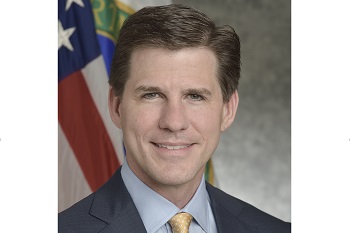U.S. Department of Energy Loan Programs Office (LPO) Executive Director Mark A. McCall presents five of the ways electric vehicles (EVs) can impact the future of transportation in the U.S.
May 18, 2016
LPO Executive Director Mark McCall joined colleagues from across the federal government to visit Tesla’s Fremont manufacturing facility, which received a $465 million ATVM loan.

Lightning Motorcycle, headquartered in San Marcos, California, builds electric motorcycles and set the land speed record for an electric motorcycle at 218 mph top speed at Bonneville, UT.

Zero Motorcycle in Scotts Valley, California, manufactures electric motorcycles, and offers a fleet program for police, security and military customers.

LPO Executive Director Mark McCall participates in a product demonstration of an electric vehicle designed and manufactured by Arcimoto.
At a recent symposium hosted by the University of California Center on Economic Competitiveness in Transportation (UCCCONNECT), I participated in a discussion about the role of innovative electric vehicle (EV) companies for America’s future. The Department’s Loan Programs Office (LPO) has a successful history of financing facilities that manufacture EVs such as the Tesla Model S and Nissan LEAF through the Advanced Technology Vehicles Manufacturing (ATVM) Loan Program.
The discussion about a future with cleaner, more efficient modes of transportation was fruitful, but seeing some of these vehicles in person was even better. Prior to the symposium, I joined colleagues from across the federal government to meet with and witness demonstrations by some of the innovative companies in the EV space today. Here are five of the ways EVs can impact the future of transportation in the U.S.:
- PASSENGER VEHICLES
Tesla’s Model S was the top-selling plug-in electric vehicle in the U.S. in 2015 and was manufactured in a facility that received a $465 million ATVM loan in January 2010. Not only did we get to see this LPO-financed facility in action, but we also visited Tesla’s “Gigafactory” under construction near Sparks, NV, which is slated to produce lithium ion batteries that will total 35 gigawatt-hours annually when the facility is fully constructed in 2020. Tesla anticipates the facility will create 6,500 jobs and help drive down the cost of battery packs used by their cars by more than 30 percent.
- MASS TRANSIT
Taking the bus is one way Americans can reduce their carbon footprint. But what if we also reduce the carbon footprint of buses? Proterra in Burlingame, California, is tackling this challenge and significantly reducing maintenance and operational costs by engineering and manufacturing advanced technology heavy-duty electric vehicles, such as buses. With more than a dozen customers across the U.S., electrified buses could be coming soon to your community.
- MOTORCYCLES
The only way Steve McQueen could have been cooler is if he rode emissions-free motorcycles. Lightning Motorcycle, headquartered in San Marcos, California, builds electric motorcycles and is also producing prototypes of electric commuter bikes, scooters, and all-terrain vehicles.
- VEHICLE FLEETS
Fuel and maintenance costs can eat into the budgets of organizations that use fleets of vehicles, such as law enforcement and the military. Zero Motorcycle in Scotts Valley, California, not only serves individual consumers, but also offers a fleet program for police, security and military customers that can find advantages in electric motorcycles, such as stealth pursuit, search and rescue, and community policing.
- GETTING AROUND TOWN
While powertrains are a major focus of making cars cleaner and more efficient, it is just one element of a vehicle. Why can’t we rethink every aspect of the vehicles on the road today? Arcimoto, based in San Carlos, California, is doing just that. They are working to design and manufacture vehicles that are lighter, more efficient and the right size for the short commutes to work or quick trips to the store that can make up so much of our transportation needs.
LPO’S ROLE IN A CLEANER TRANSPORTATION FUTURE
As we saw firsthand, there are many companies doing innovative things to help put cleaner, more fuel-efficient vehicles on U.S. roads. With more than $16 billion in remaining loan authority, the ATVM Loan Program can help finance the manufacturing of not only electric light-duty vehicles, but many different types of advanced technology vehicles, or the components that improve the fuel economy of light-duty vehicles.


